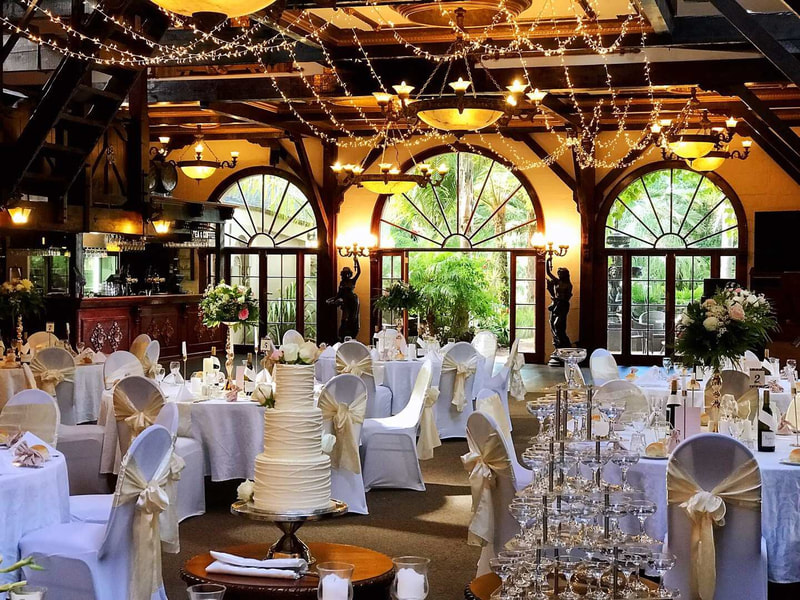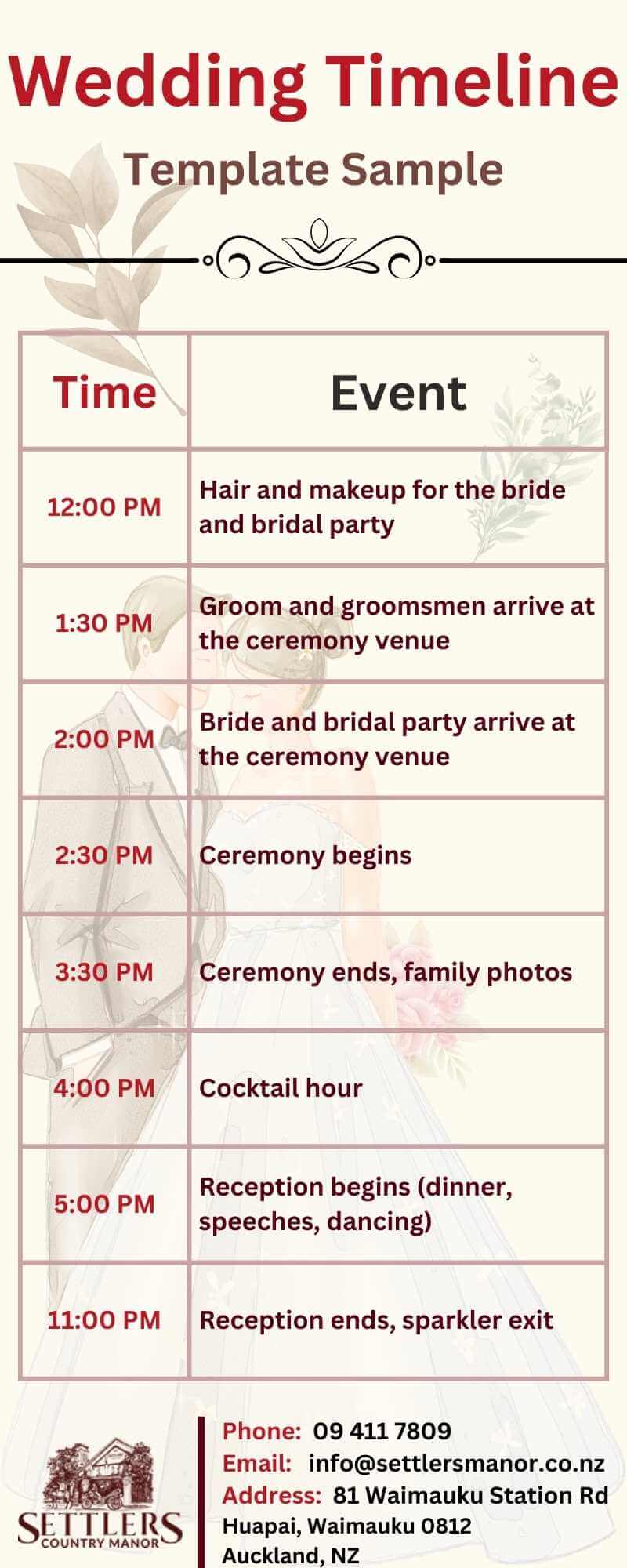|
The planning process for a wedding can be a challenging one, as so many details need to be taken into account and so many deadlines need to be met. One of the best ways to ensure that everything runs smoothly on your big day is to create a wedding timeline. A wedding timeline is a detailed schedule that outlines all of the important events and tasks leading up to your wedding day, as well as the schedule for the day itself. In this guide, we will walk you through the process of creating your own wedding timeline, from understanding the basics of timeline planning to finalizing and sharing your timeline with vendors and guests. Understanding the Basics of Wedding Timeline PlanningWhat is a Wedding Timeline? A wedding timeline is a schedule that outlines all of the important events and tasks leading up to your wedding day, as well as the schedule for the day itself. It can include everything from setting a date for your engagement party to finalizing the menu for your reception. The timeline should be as detailed as possible, including specific dates, times, and locations for each event. Why is a Wedding Timeline Important? A wedding timeline is important because it helps you stay organized and on top of all the planning tasks that need to be completed before your big day. It also helps you ensure that everything runs smoothly on your wedding day. For example, if you have a detailed timeline that outlines when the florist will be delivering the flowers and when the DJ will be setting up, you can be sure that everything will be in place and ready to go when you need it. Additionally, a timeline can help you avoid conflicts with vendors and ensure that all of your guests have the information they need to be in the right place at the right time. Setting the Timeline for Your EngagementHow to Determine the Length of Your Engagement The length of your engagement will depend on a variety of factors, including your personal preferences, your work schedules, and the availability of your wedding venue. Typically, engagements last between six months and a year. However, some couples choose to have a longer engagement in order to save money or take their time planning the wedding. Setting Deadlines for Planning Tasks Once you have determined the length of your engagement, you can begin setting deadlines for all of the planning tasks that need to be completed before your wedding day. This can include everything from choosing a wedding venue to finalizing the guest list. Be sure to take into account the time it will take to complete each task, as well as any contingencies that may arise. Planning the Ceremony and Reception
Coordinating with VendorsCommunicating with Vendors About Your Timeline One of the most important aspects of creating a wedding timeline is coordinating with all of the vendors that will be involved in your wedding. This includes florists, photographers, caterers, and musicians, among others. Be sure to communicate your timeline to all of your vendors well in advance, and make sure that they understand their roles and responsibilities. Coordinating Vendor Schedules Another important aspect of coordinating with vendors is making sure that their schedules are in line with your timeline. For example, if you want your florist to deliver the flowers to the ceremony venue at a certain time, be sure to confirm that they will be able to do so. Also, make sure that all of your vendors are aware of the schedule for the day, and that they know when they need to be in place and when they can take breaks. Finalizing and Sharing Your TimelineReviewing and Adjusting Your Timeline Once you have completed your wedding timeline, it is important to review it and make any necessary adjustments. Be sure to double-check all of the dates, times, and locations, and make sure that everything is in order. Sharing Your Timeline with Vendors and Guests The final step in creating your wedding timeline is sharing it with all of the vendors and guests who will be involved in your wedding. This can include distributing a detailed itinerary that outlines the schedule for the day, as well as providing vendors with a list of their responsibilities. Be sure to communicate any changes or updates to the timeline as they arise. Sample Template for Wedding TimelinePlease keep in mind that this is just an example and you should adjust the timeline to suit your specific wedding and preferences. Also, please note that this is a general template and you should verify the timeline with all the vendors involved, including the wedding planner, venue, photographer, DJ, and caterer. Please keep in mind that this is just an example and you should adjust the timeline to suit your specific wedding and preferences. Also, please note that this is a general template and you should verify the timeline with all the vendors involved, including the wedding planner, venue, photographer, DJ, and caterer. Conclusion:Creating a wedding timeline is an essential part of wedding planning. It helps to keep you organized and on track throughout the planning process. With this step-by-step guide to creating your wedding timeline, you now have a better understanding of the basics of wedding timeline planning, setting the timeline for your engagement, planning the ceremony and reception, coordinating with vendors, and finalizing and sharing your timeline. Remember to take into account the specific location, time of year, and other factors as you create your wedding timeline. And always consult with your vendors to ensure a smooth flow of events on your big day. Now that you have a better understanding of how to create a wedding timeline, it's time to start planning your big day! Don't miss the opportunity to book your dream wedding venue at Settlers Country Manor. Contact us today and let us help you plan the perfect wedding! FAQsWhat is a wedding timeline and why is it important?
A wedding timeline is a detailed schedule of events for your wedding day. It is important because it helps you stay organized and on track throughout the planning process, ensures that everything runs smoothly on the day of the event, and helps vendors understand what is expected of them.
How do I determine the length of my engagement?
The length of your engagement will depend on your personal circumstances and preferences. Factors to consider include your availability and that of your partner, the time of year you want to get married, and how long it will take to plan the wedding. It's recommended to have at least 12-18 months for planning and preparation.
How do I plan the ceremony and reception timeline?
Planning the ceremony and reception timeline requires consideration of a number of factors, including the venue, the size of the wedding party, the number of guests, and the flow of the events. It's recommended to work closely with a wedding planner and vendors to ensure that everything runs smoothly.
How do I coordinate with vendors on my wedding timeline?
Coordinating with vendors on your wedding timeline involves clear and efficient communication. This includes sharing your timeline with them in advance, discussing any potential issues or concerns, and making sure that everyone is on the same page.
How do I share my timeline with guests?
Sharing your timeline with guests can be done through various means, including a wedding website, a printed itinerary, or a phone app. The key is to make sure that the information is easily accessible and that guests understand the schedule of events.
0 Comments
Your comment will be posted after it is approved.
Leave a Reply. |
|
MENU
|
|








